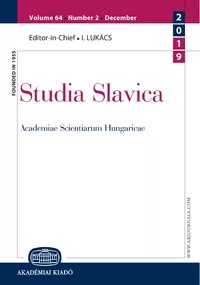Фразеологія у змінних полюсах інфопростору (моніторинг медіа та створення фразеоматриці)
Phraseology in Variable Poles of the Infospace (Media Monitoring and Creating a Phrase Matrix)
Author(s): Dmytro SyzonovSubject(s): Media studies, Theory of Communication
Published by: Akadémiai Kiadó
Keywords: phraseological innovation; new phraseology; media linguistic analysis; media communication; media literacy; language manipulation; Ukrainian media language; media linguistics;
Summary/Abstract: The article presents the result of a complex screening of a modern Ukrainian (to make a comparison, atten- tion is focused on Polish and Hungarian) media to clarify the manipulative function of phraseology. The author presents typical models of phraseological units functioning in mass communication (indication of semantic collision zones), which constitute a certain matrix of dynamic processes of modern languages. In modern media, authors increasingly turn to phraseology as a modern manipulative resource that helps con- vey the “correct” thought to the recipient. Phraseologisms in headlines, which play the role of the semantic center of media articles, are especially effective. We also considered phraseology in other parts of the media text – the subtitle and the conclusion, in which phraseology performs five key functions – meaningful, ex- planatory, informative, accentual allusive. It is important that each of the functions meets the requirements of time and the criterion of factuality, which help in creating a media text. According to our observations, idioms with a manipulative purpose are mostly used in Internet communication, which is characterized by special dynamism and informational resonance. It is proved that phraseology as a verbal cultural code can influence the recipient, given his background knowledge. Therefore, media resources with a large audience of readers (print press) / viewers (television, Internet) / listeners (radio) were taken into account. It is im- portant that the author took into account time-limited media resources (after February 24, 2022, in connec- tion with the full-scale invasion of Russia on the territory of Ukraine, some national media changed their broadcasting network and content, or completely disappeared from the media field). In our opinion, the objectification of the obtained data depends on the uniform monitoring of media sources (this is foreseen in our research, when various formats and genres of mass media – print and electronic) came under analysis. A special role in the article is given to new phraseological units arising as: (a) speech reflection on social and political changes (extralingual factor); (b) a typical phenomenon of “linguistic fashion” (intralingual factor); (c) manipulative universe of mass consciousness (psycholingual factor); (d) speech representative of global information changes in the world (technological factor). The dynamics of language processes depends on progressive changes in language systems and the evolution of functional styles, in particular the expansion of the boundaries of the media style (the emergence of a new information sphere → the emergence of a new media source → the emergence of a new manipulative tool → the emergence of a new phraseology).
Journal: Studia Slavica Academiae Scientiarum Hungaricae
- Issue Year: 68/2023
- Issue No: 1-2
- Page Range: 401-421
- Page Count: 21
- Language: Ukrainian
- Content File-PDF

